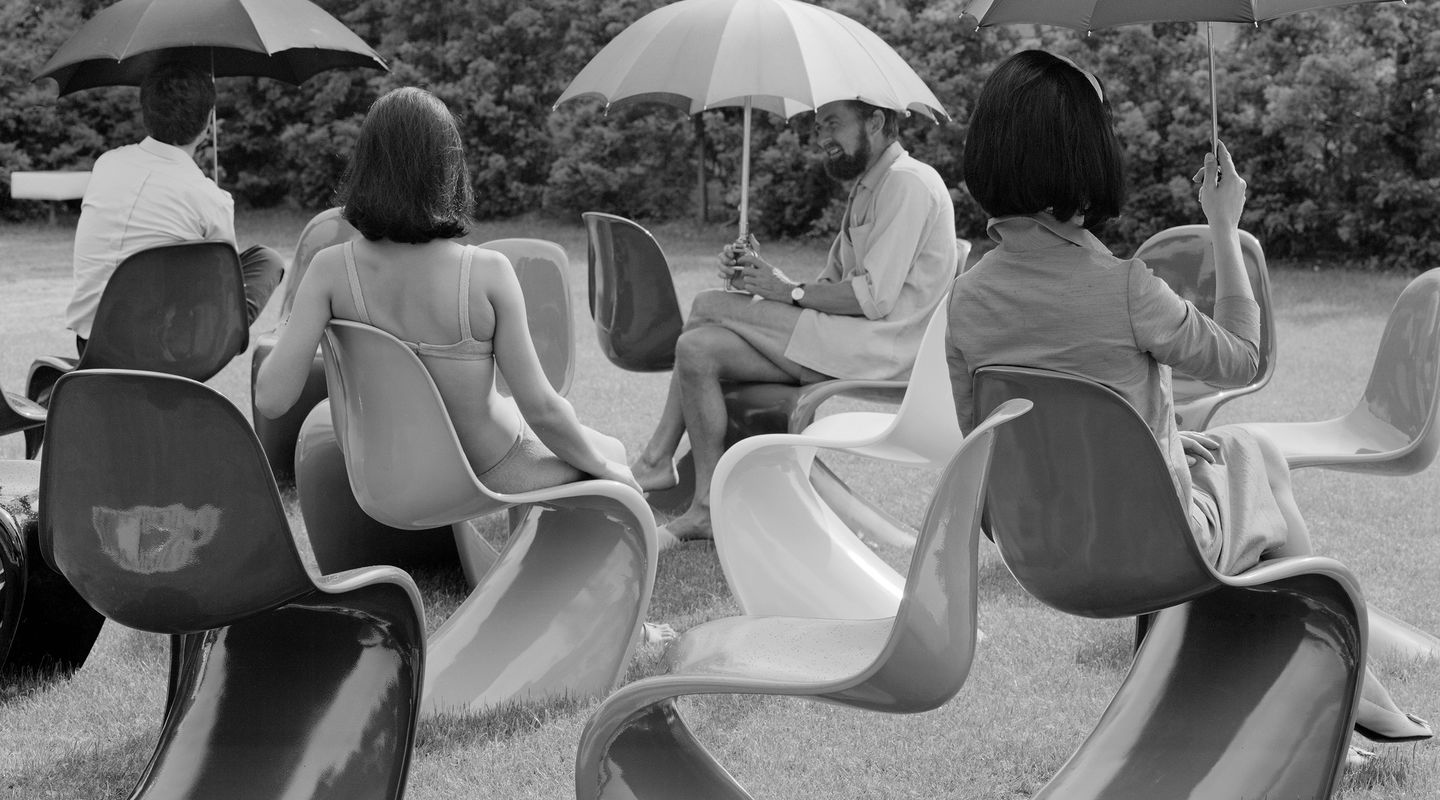Enquiry
For information regarding the collection or to find out about upcoming events please leave your contact details below and we will be in touch shortly.
11 Sep 2018
The history of the Panton Chair by Verner Panton, 1959/1960
The history of the Panton Chair dates back to the latter half of the 1950s, when Danish designer Verner Panton developed the idea of a plastic cantilever chair. No manufacturers would pursue this daring concept except Willi Fehlbaum, the founder of Vitra. With the support of Rolf Fehlbaum and the head of product development, Manfred Diebold, Vitra decided to take on the project.
1963 marked the start of a collaboration between Vitra and Verner Panton with the development of one of the most iconic chair designs of the 20th century. It turned out to be a nearly impossible challenge, as the bold contours imagined by the designer had to be reconciled with the physical limits of plastics technology and manufacturing requirements. A small pilot series of just 150 pieces was manufactured in 1967. It was the first all-plastic chair to be made in one piece with a cantilever design.
Unfortunately, the material subsequently proved to be far less resistant to aging than was initially assumed, causing the chairs to break. Production was therefore discontinued in 1979. Further advancements in plastics technology and new injection moulding options inspired Vitra and Panton to pick up the project again in the 1990s. Working closely together, they developed a new version made of polypropylene. Thirty years after the initial market launch, one of Panton’s key goals was finally reached: the plastic chair as an affordable industrial product.
Verner Panton showed an ardent interest in innovative technologies, techniques and materials over the course of his lifetime. In 2018 to celebrate its 50-year anniversary Vitra launched 2 new versions to celebrate Verner Panton’s iconic design; the Panton Chrome and Panton Glow
With the new Panton Chrome edition, an old dream of the designer finally comes to fruition: from the early 1970s Panton had explored the option of giving the Panton Chair a mirrored surface however, the sensitivity of such a surface to scratching was an insurmountable technical obstacle at that time. Today, almost 50 years later, a reliable yet complex procedure is available, one that involves highly specialised hand craftsmanship. The dazzling mirrored effect of Panton Chrome is the result of a metallisation process, in which metal particles are embedded in multiple layers of varnish. This complex coating system is resilient enough to cope with the slight movement of the cantilever chair when in use, while being sufficiently robust to efficiently protect the sensitive surface.
For Panton’s legendary 1970 installation ‘Visiona 2’, in particular, he developed walls and ceilings that appeared to glow from within as a result of their layout and colour scheme, giving the room a psychedelic look. With this in mind, Vitra has developed the new Panton Glow in consultation with Verner’s wife Marianne Panton. In an elaborate process, five layers of a varnish containing phosphorescent pigments are carefully applied by hand to the raw polyurethane shell of the Panton Classic and sealed with a high-gloss protective coating. The luminous pigments absorb daylight and emit a blue glow in the dark. The almost ghostly appearance of Panton Glow in the obscurity of night has a somewhat mystical aura and sheds new light – quite literally – on this iconic classic.
Both limited editions – Panton Chrome and Panton Glow – are not just striking eye-catchers that give a unique expression to the chair’s sculptural qualities; they are also fully functional pieces of furniture that meet all standard seating requirements.









